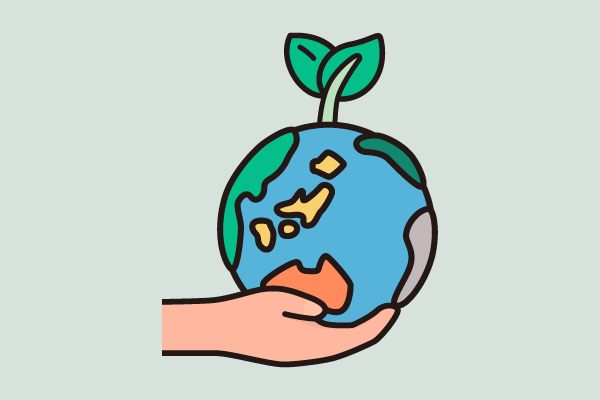カフェと言えば!と聞くと、皆さんそれぞれ思うものがあるかもしれませんが、今回は特徴的な雰囲気を作り出している”ブルーボトルコーヒー”についてのお話です。

https://forbesjapan.com/articles/detail/49824/1/1/1?s=ns
私たちブルーボトルコーヒーは、2002年に創業者のジェームス・フリーマンによって、アメリカ・サンフランシスコで誕生しました。元クラリネット奏者というキャリアを持ち、練習のかたわら自宅の倉庫でコーヒー焙煎をはじめたジェームスは、世界中の豆に想いを馳せながら焙煎を追求するうちにコーヒーに魅了されていきました。ファーマーズマーケットに出店するようになったジェームスは、自身のコーヒー作りに影響を与えた日本の喫茶店のように、一杯ずつコーヒーを作り提供していました。それは当時のアメリカでは珍しいスタイルだったため、最初は不思議がられましたが、次第に食にこだわりをもつサンフランシスコのお客様に支持されるようになりました。カフェをオープンしたのは、2005年。ベイエリアのヘイズバレーにある一号店は、“すべて注文を受けてからお客様ひとりひとりのために作る”という、鮮度と味へのこだわりが評判となり、地域の人々やコーヒー愛好家たちが集う場となりました。そして、2015年にはコーヒー文化に敬意を表し、長年の夢であった日本に海外一号店をオープン。その後も出店する地域に根ざした店作りを大事にしながら店舗を拡大し、現在はアメリカ、日本、韓国、香港で約100店舗(2020年4月現在)を展開しています。
https://store.bluebottlecoffee.jp/blogs/blog/aboutbluebottle
社内と社外では意図的に通訳の仕方を使い分けていました。社内のメンバーにはジェームスのアーティスティックな部分を知ってもらおうと、ニュアンスをそのまま伝えるほか、来日した際には交流の場を積極的に設け、ブランドの本流に触れてもらうようにしていました。
一方、社外に対しては直訳で伝えても、本意が伝わらないことがほとんどなので、意訳したり、行間を埋めるような説明を補足していきました。
特に苦労したのは、2017年10月にオープンした、日本7店舗目の三軒茶屋カフェの空間デザインです。ジェームスから渡されたのは、言葉ではなく、曲でした(笑)
建築家の長坂常(ながさかじょう)さんと一緒に、何度も曲を聴いて解釈を話し合ったのですが、長坂さんも「こんな経験は初めて」とおっしゃってましたね。
最終的には、高音と低音が共存していることをヒントに、無機質さと暖かさが共存している店舗を作りました。完成したカフェに訪れたジェームスから「まさにこれだ」という反応をもらいとても嬉しかったことを覚えています。
私は、自分自身で考えないと、人は育たないと思っています。だから、考えるきっかけや裁量を与えるようにしているんです。ブルーボトルでは、味以外の部分に細かいマニュアルはなく、カフェによってコンセプトも違う。自分たちがお客さまのことを考え抜き、工夫し、成長してもらいたい。「こうしなさい」ではなく「どう思う?」「なぜそう思った?」というコミュニケーションを取っています。
アルバイトも社員も、入社時に必ず2日間の研修を受けます。そこで、ブルーボトルの歴史や想い、マインドセット、人間関係の構築方法などをインストールしてもらうんです。初期はジェームスと交流する機会を設けることもしました。こうした工夫によって、自分で考えるという風土が醸成できています。
カフェを元奏者が創業したということもあり、店舗それぞれの雰囲気に合わせた曲にまでこだわっていることに気づいている人はどれぐらいの数いるのでしょうか?
また、このインタビューからもわかるように外資系企業を日本で展開させていく難しさの中で”コミュニケーション”の部分が1番重要になってくるのではないでしょうか?
そのためにも英語やその他のコミュニケーション手段を持ち、お互いの意思疎通を図ることが大切だと考えます。
残りの大学生活ではそこにも焦点を当てながら勉強を進めていこうかなと思います。
English edition
When it comes to cafés! This time we're talking about Blue Bottle Coffee, which has created a distinctive atmosphere.
https://forbesjapan.com/articles/detail/49824/1/1/1?s=ns
What is Blue Bottle Coffee?
Blue Bottle Coffee was founded by James Freeman in 2002 in San Francisco, USA. A former clarinetist by trade, James started roasting coffee in his warehouse while practising. When James began to set up shop at farmers' markets, he made and served coffee one cup at a time, much like the Japanese coffee shops that had influenced his own coffee making. This was an unusual style in the USA at the time, which was strange at first, but gradually gained the support of food-conscious San Francisco customers. The café opened in 2005. The first shop in the Bay Area's Hayes Valley became a gathering place for local residents and coffee lovers, thanks to its commitment to freshness and taste, with everything made to order and for each individual customer. In 2015, the first overseas shop was opened in Japan, a long-time dream of ours, as a tribute to the coffee culture. Since then, the company has continued to expand, placing importance on creating shops that are rooted in the communities where they are located, and currently has about 100 shops (as of April 2020) in the USA, Japan, South Korea and Hong Kong.
https://store.bluebottlecoffee.jp/blogs/blog/aboutbluebottle
We deliberately used different interpretation methods internally and externally. For internal members of the company, we conveyed the nuances of James' artistic side as they were, and also actively provided opportunities for interaction when he visited Japan, so that they could get in touch with the mainstream of the brand.
On the other hand, direct translations for people outside of the company usually do not convey the true meaning of the message, so we translated the message or supplemented it with explanations that filled in the gaps between the lines.
A particular challenge was the space design for the seventh Sangenjaya café in Japan, which opened in October 2017. James gave us a song, not words (laughs).
Together with architect Tsune Nagasaka, we listened to the song many times and discussed interpretations, and Nagasaka said he had never experienced anything like this before.
In the end, we took a hint from the coexistence of high and low tones to create a storefront that is both inorganic and warm. I remember being very happy to receive a reaction from James when he visited the completed café, who said, "This is exactly what I wanted".
I believe that if you don't think for yourself, you don't develop people. That's why I try to give them opportunities to think and discretion. At Blue Bottle, there is no detailed manual for anything other than taste, and each café has a different concept. We want people to think through their own customers, devise their own ideas and grow. We don't say, "Do this", but "What do you think?" Why do you think so?" We communicate with them.
Both part-timers and employees receive two days of training when they join the company. This is where they are introduced to the history of Blue Bottle, our thoughts, mindset and how to build relationships. In the early days, we also gave them the opportunity to interact with James. These innovations have helped to foster a culture of thinking for oneself.
As the café was founded by a former player, how many people realise that you even pay attention to the music that matches the atmosphere of each shop?
Also, as this interview shows, communication is probably the most important part of the difficulties of developing a foreign company in Japan.
For this reason, I think it is important to have English and other means of communication and to communicate with each other.
I think I will focus on this in the rest of my university life as I continue my studies.